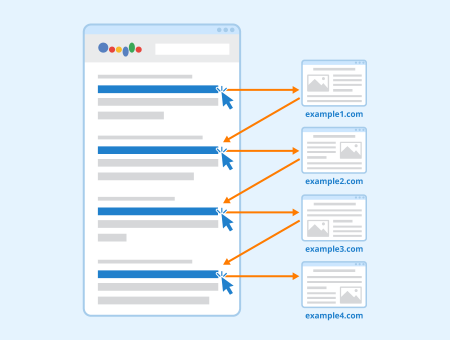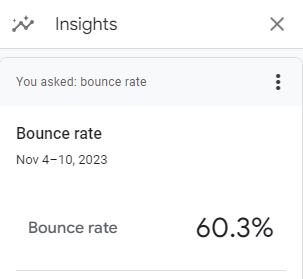What is pogo sticking?

Pogo sticking is when a searcher clicks on a search result and then goes back to the SERPs and moves on to the next one. This may signal to search engines that the initial result didn’t provide the user with the content they were looking for.
Pogo sticking is considered a negative signal as it shows that a webpage didn’t satisfy the user’s intent or didn’t provide the information they were looking for.
What causes pogo sticking?
There can be various different things that cause pogo sticking, which can make it difficult to prevent. Below are a few common causes:
- Thin content – Thin content can cause pogo sticking by not providing the user with the information they were after.
- Poor user experience – A poor user experience caused by, for example, a site that’s not optimized for mobile, spammy pop-ups, or an overall poor website design can cause a user to move to the next site.
- Slow site – A poor page speed can cause loading issues which can cause users to go back to the SERPs to try a different site.
- Doesn’t satisfy search intent – Even with high-quality content on a page, if the page doesn’t satisfy the search intent, pogo sticking can occur.
Pogo sticking and bounce rate
Bounce rate is a term that’s closely linked to pogo sticking, as a high bounce rate shows that a lot of people leave a page without viewing another page. However, a site’s bounce rate indicates the percentage of people that navigate away from the page without clicking through to any other pages but doesn’t give you any information about whether or not they go back and click on other results for the original search term.

A high bounce rate doesn’t necessarily indicate a low-quality page. If a website visitor finds all the information they were looking for on a page, a high bounce rate can actually be a positive signal as long as there is no pogo sticking.
Is Pogo Sticking a Ranking Factor?
Despite common misconceptions, pogo sticking is not a direct ranking factor. John Mueller of Google has explicitly stated[1] that pogo-sticking behavior is not a signal in ranking search results. This clarification is crucial for website owners and SEO professionals who might be concerned about the impact of pogo sticking on their site’s SEO performance. The reasons for users navigating back and forth between search results are varied and complex, making it impractical for Google to use this as a reliable ranking signal.
However, this does not diminish the importance of addressing pogo sticking and doesn’t necessarily mean search engines don’t use the metric in other ways. While it may not directly affect rankings, reducing pogo sticking is generally considered beneficial for improving user experience and engagement, which are vital components of a successful SEO strategy.
How to reduce pogo sticking
A few things that can help to prevent pogo sticking include:
- Ensure a fast load time.
- Provide in-depth content.
- Optimize a page for the right keywords and the right search intent.
- Remove any spammy pop-ups.
- Keep content up to date.
- Implement an SSL certificate on the site.
- Improve the user experience on the website.
- Use relevant internal links (high up) on the page.
Its relevance to SEO
Pogo sticking, while not a direct ranking factor, likely influences SEO performance indirectly. It’s a reflection of user satisfaction and engagement with a website’s content. When users frequently return to the search results after visiting a page, it suggests that the content may not be fully aligned with their search intent or expectations.
Although Google’s John Mueller has clarified that pogo sticking is not used as a ranking signal, understanding and addressing the underlying causes of pogo sticking can still be crucial for SEO. It helps in enhancing the overall user experience, which is a cornerstone of SEO success. Improving content relevance, site speed, and user experience can significantly reduce pogo sticking, indirectly boosting SEO efforts.
Proper on-page SEO can also help reduce pogo sticking by ensuring a good user experience and providing in-depth content on all pages. Optimizing your pages for the right keywords can also help by ensuring a site’s pages are relevant to the search term and the search intent behind it.
Related links
References
- ↑ Google Does Not Use Pogo-Sticking As a Ranking Factor Search Engine Journal. Retrieved 13 November 2023.
Similar articles
